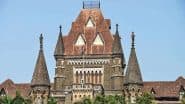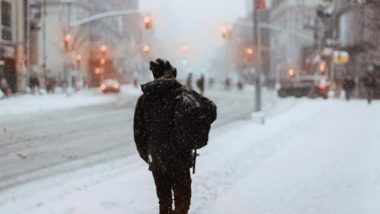Buffalo, December 25: A frigid winter storm killed at least 18 people as it swept across the country, knocking out power to hundreds of thousands of homes and businesses and leaving millions of people on edge about the possibility of Christmas Eve blackouts.
The storm unleashed its full fury on Buffalo, New York, with hurricane-force winds causing whiteout conditions. Emergency response efforts were paralysed and the city's international airport was shut down.
Across the U.S., officials have attributed deaths to exposure, car crashes, a falling tree limb and other effects of the storm. At least three people died in the Buffalo area, including two who suffered medical emergencies in their homes and couldn't be saved because emergency crews were unable to reach them amid historic blizzard conditions. Millions in US Hunker Down from Frigid, Deadly Monster Storm.
Deep snow, single-digit temperatures and day-old power outages sent Buffalo residents scrambling Saturday to get out of their houses to anywhere that had heat. New York Gov. Kathy Hochul said the Buffalo Niagara International Airport will be closed through Monday morning and almost every fire truck in Buffalo was stranded in the snow.
“No matter how many emergency vehicles we have, they cannot get through the conditions as we speak,” Hochul said. Blinding blizzards, freezing rain and frigid cold also knocked out power from Maine to Seattle, while a major electricity grid operator warned the 65 million people it serves across the eastern U.S. that rolling blackouts might be required.
Pennsylvania-based PJM Interconnection said power plants are having difficulty operating in the frigid weather and has asked residents in 13 states to conserve electricity through at least Christmas morning. The Tennessee Valley Authority, which provides electricity to 10 million people in Tennessee and parts of six surrounding states, directed local power companies to implement planned interruptions but ended the measure by Saturday afternoon. The start of the NFL's Tennessee Titans' game in Nashville was delayed an hour by a planned power outage.
Across the six New England states, more than 273,000 electric customers remained without power on Saturday, with Maine the hardest hit and some utilities saying it could be days before electricity is restored. In North Carolina, 169,000 customers were without power Saturday afternoon, down from a peak of more than 485,000, but utility officials said rolling blackouts would continue for “the next few days.” What Is Bomb Cyclone? Know All About the Phenomenon Responsible for Extremely Cold Weather and Freezing Temperatures Affecting US.
Those without power included James Reynolds of Greensboro, who said his housemate, a 70-year-old with diabetes and severe arthritis, spent the morning bundled beside a kerosene heater with indoor temperatures “hovering in the 50s.”
In the Buffalo suburb of Cheektowaga, two people died in their homes Friday when emergency crews could not reach them in time to treat their medical conditions, according to Erie County Executive Mark Poloncarz. He said another person died in Buffalo and said the blizzard may be “the worst storm in our community's history.”
It was taking ambulances over three hours to do one trip to a hospital, Poloncarz said. Forecasters said 28 inches (71 centimeters) of snow accumulated as of Saturday in Buffalo. Last month, areas just south of Buffalo saw a record 6 feet of snow (about 1.8 meters) from a single storm. The latest storm knocked out the furnace in the Buffalo home of Brian LaPrade, who woke up Saturday morning to indoor temperatures dipping to below 50 degrees Fahrenheit (10 degrees Celsius).
“This morning I had to go out and dig out the vents,” LaPrade said. “As it was, the snow was taller than my snow blower.” Plows were on the roads, but large snow drifts, abandoned cars and downed power lines were slowing progress.
On the Ohio Turnpike, four died in a pileup involving some 50 vehicles. A Kansas City, Missouri, driver was killed Thursday after skidding into a creek, and three others died Wednesday in separate crashes on icy northern Kansas roads.
A utility worker in Ohio was also killed Friday while trying to restore power, according to the Buckeye Rural Electric Cooperative. It said the 22-year-old died in “an electrical contact incident” near Pedro in Lawrence County. A woman in Vermont died in a hospital Friday after a tree broke in the high winds and fell on her. Police in Colorado Springs said they found the body of a person who appeared to be homeless as subzero temperatures and snow descended on the region. Near Janesville, Wisconsin, a 57-year-old woman died Friday after falling through the ice on a river, the Rock County Sheriff's Office announced.
Along Interstate 71 in Kentucky, Terry Henderson and her husband, Rick, were stuck for 34 hours in a massive traffic jam caused by several accidents. The truck drivers weathered the wait in a rig outfitted with a diesel heater, a toilet and a refrigerator but nonetheless regretted trying to drive from Alabama to their home near Akron, Ohio, for Christmas.
“We should have stayed,” said Terry Henderson, after they got moving again Saturday. The storm was nearly unprecedented in its scope, stretching from the Great Lakes near Canada to the Rio Grande along the border with Mexico. About 60% of the U.S. population faced some sort of winter weather advisory or warning, and temperatures plummeted drastically below normal from east of the Rocky Mountains to the Appalachians, the National Weather Service said.
As millions of Americans were traveling ahead of Christmas, more than 2,360 flights within, into or out of the U.S. were canceled Saturday, according to the tracking site FlightAware. While in Mexico, migrants camped near the U.S. border in unusually cold temperatures as they awaited a U.S. Supreme Court decision on pandemic-era restrictions that prevent many from seeking asylum.
Forecasters said a bomb cyclone — when atmospheric pressure drops very quickly in a strong storm — had developed near the Great Lakes, stirring up blizzard conditions, including heavy winds and snow. Western New York often sees dramatic lake-effect snow, which is caused by cool air picking up moisture from the warm water, then dumping it on the land. But even area residents found conditions to be dire on Christmas Eve.
Latricia Stroud said she and her two daughters, 1 and 12, were stranded without heat or power in their Buffalo house since Friday afternoon, with the snow too deep to leave. “I have to go over a snowbank to get out,” Stroud told the AP. “There's a warming center, I just need a ride to get there.”
(The above story is verified and authored by Press Trust of India (PTI) staff. PTI, India’s premier news agency, employs more than 400 journalists and 500 stringers to cover almost every district and small town in India.. The views appearing in the above post do not reflect the opinions of LatestLY)













 Quickly
Quickly


